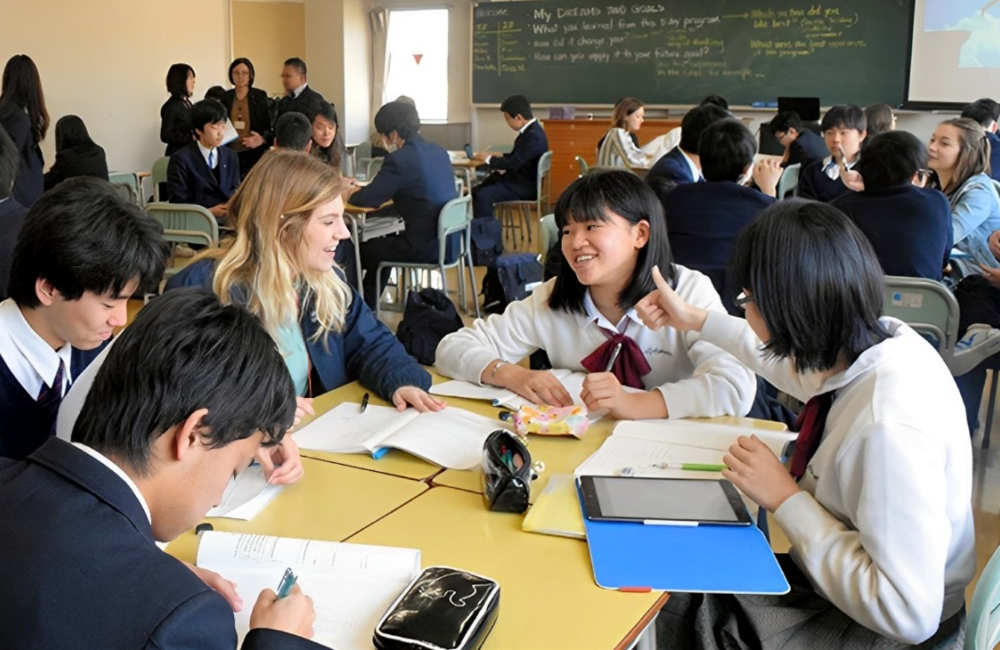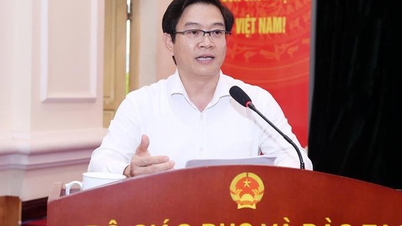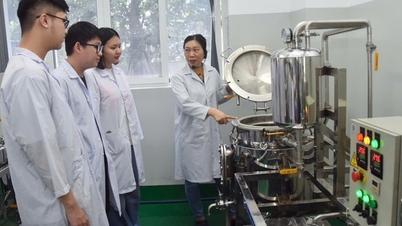The "Survey on the Status of English Education " has been conducted annually by the Ministry of Education, Culture, Sports, Science and Technology (MEXT) of Japan since 2013 to assess the current situation and propose measures to improve English proficiency.
The survey targeted boards of education in each prefecture and city, as well as all public elementary schools (18,560 schools), junior high schools (9,165 schools) and high schools (3,256 schools), the Japan Times reported.

The 2023 survey results show that 50% of junior high school students achieved English proficiency equivalent to CEFR level A1 (abbreviated as A1) or higher, and 50.6% of high school students achieved level A2 or higher. This is the first time that Japanese students at these two levels have reached or exceeded 50%. This rate was 49.2% and 48.7% last year, respectively.
Meanwhile, the rate of students achieving B1 level or higher was 19.8%, down 1.4% compared to last year. In addition, there are still many gaps in English proficiency between provinces and cities.
The Japanese government 's goal, as stated in the "Fourth Basic Plan for the Promotion of Education 2023-2027" is to have at least 60% of junior high and high school students achieve A1 level or higher by the end of junior high school and A2 level or higher by the end of high school.
The English proficiency of Japanese English teachers is also improving. The percentage of English teachers with a B2 level is 44.8% in junior high schools and 80.7% in high schools. All of these figures are on the rise and are the highest since the survey began. However, the percentage of high school English teachers with a C1 level or higher is 21.8%, down 0.7% from the previous year.
Systemic issues
English education in Japan began in the mid-19th century, according to Gymboree Global . During the Meiji period (1868-1912), only a small group of elite students studied English in junior high and high schools.
By the Taishō period (1912-1926), English education had spread nationwide. However, this development was halted during World War II due to conflicts with Britain and the United States. After World War II, English education was revived, mainly under American influence. At this time, the focus was on developing reading and writing skills, aiming to produce Japanese workers who could understand and write documents for foreign countries.
English education in Japan faces many systemic problems. Although students study English from junior high school through university, many have difficulty using it for communication, largely due to the focus on reading, writing, and grammar, combined with an exam-oriented education.
This foreign language education in Japan also often lacks the necessary listening and speaking activities. Students may read English aloud in class, but there are few opportunities for correct pronunciation instruction and personalized learning, as well as for using English outside the classroom, resulting in a lack of practice in real-life contexts.
Many English classes are taught by Japanese teachers and use Japanese instead of English, hindering students' ability to develop listening and speaking skills.
Investment strategy in teacher salaries
Investment in salaries and improving the qualifications of English teachers is expected to significantly improve the language's ability in Japan.
English teachers in Japan typically earn 200,000-600,000 yen per month (about 34.4-103.4 million VND), according to the TEFL Organization. This salary varies depending on geographical location, and is higher in urban areas, especially Tokyo, due to the high cost of living.

The JET (Japan Exchange and Teaching) program is a government initiative to bring foreigners to Japan to work as assistant language teachers (ALTs) in public schools or as coordinators for international relations (CIRs) in local government offices. Teachers in the JET program start with a salary of 280,000 yen/month (about 48.2 million VND) and annual salaries range from 2.8-3.9 million yen (about 482 million-672 million VND).
Language support teachers (ALTs) earn between 200,000 and 250,000 yen per month (approximately 34.4 million to 43.1 million VND), depending on experience. Class sizes are often larger, with more than 30 students. While the salary may not be sky-high, it is a good starting point for new teachers.
Teachers at Eikaiwas (private English schools) can earn around 250,000 Yen/month (about 43.1 million VND). They usually work 5-8 hours/day with small class sizes of 10 to 15 students.
Teaching at universities has higher salaries, ranging from 300,000-600,000 Yen/month (about 51.7 million-103.4 million VND). Positions at universities often require fewer working hours, about 10-15 hours/week, and have long vacation time.
Many teachers with experience teaching at international schools earn salaries ranging from 250,000 to 600,000 yen per month (about 43.1 million to 103.4 million VND). These schools often provide housing subsidies but most are located in urban areas, especially Tokyo.
Overall, teaching English in Japan offers competitive salaries and many opportunities, allowing teachers to live comfortably, especially in rural areas.
However, the road to significantly improving the cherry blossom country's foreign language ability is still long and challenging. The level of improvement according to the MEXT survey is remarkable but not significant.
A 2023 survey by Swiss international education company EF Education First, which measured English proficiency among people in 113 non-English-speaking countries and regions, found that Japan ranked 87th overall and 15th among 23 Asian countries and regions. The country scored 4 out of 5, which is equivalent to “low proficiency” (64-90).
Professor Barry O'Sullivan (British Council) commented that promoting English education reform in Japan requires a long-term vision because meaningful changes often take a generation to complete. Whether the reform is successful or not depends on the unification of three main components: the national curriculum, teaching methods and assessment methods - collectively known as the Comprehensive Learning System.
According to Professor Barry, policymakers need to ensure that teachers are fully equipped to meet the new educational goals; publishers must develop textbooks that are aligned with these goals; and assessment systems need to cover all four language skills.
While the process is complex and time-consuming, experience from countries like Spain shows that, when implemented comprehensively, reforms can deliver significant progress over time.

Source: https://vietnamnet.vn/tra-hon-103-trieu-thang-nhat-ban-dau-tu-luong-giao-vien-tieng-anh-nhu-nao-2324807.html







































![[Photo] President Luong Cuong receives President of the Cuban National Assembly Esteban Lazo Hernandez](https://vphoto.vietnam.vn/thumb/1200x675/vietnam/resource/IMAGE/2025/9/30/4d38932911c24f6ea1936252bd5427fa)

![[Photo] Panorama of the cable-stayed bridge, the final bottleneck of the Ben Luc-Long Thanh expressway](https://vphoto.vietnam.vn/thumb/1200x675/vietnam/resource/IMAGE/2025/9/30/391fdf21025541d6b2f092e49a17243f)































































Comment (0)